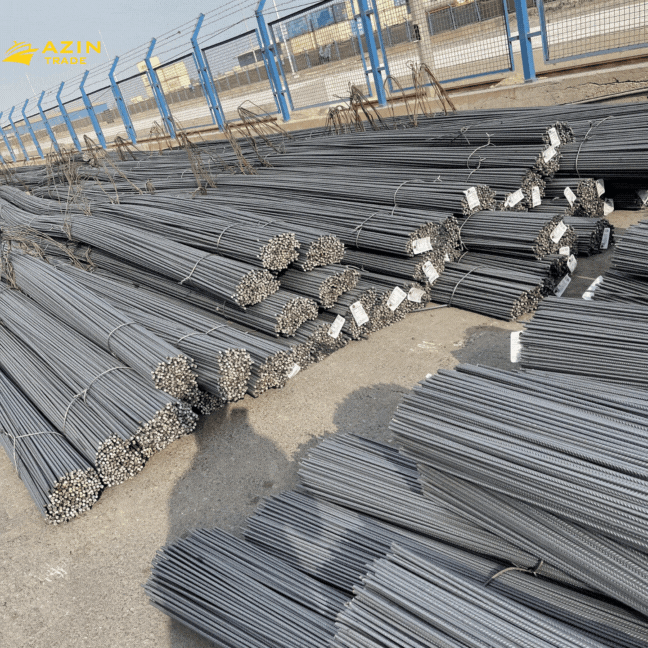
rebar export
Exploring the Global Export Market for Rebar: Trends, Challenges, and Opportunities
Introduction
The global export market for rebar, an essential component in construction and infrastructure development, is a dynamic sector influenced by economic trends, regulatory frameworks, and technological advancements. This comprehensive research delves into the intricate landscape of rebar exports, examining key trends, challenges, opportunities, and successful strategies employed by leading exporting countries.
1. Understanding Rebar: Foundation in Construction
Rebar, short for reinforcing bar, is a vital element in concrete construction, enhancing the tensile strength and durability of concrete structures. Used extensively in buildings, bridges, highways, and other infrastructure projects, rebar plays a pivotal role in ensuring structural integrity and longevity.
2. Global Market Overview of Rebar
2.1 Market Size and Growth Trends
The global demand for rebar continues to grow steadily, driven by rapid urbanization, population growth, and infrastructure development across emerging and developed economies. According to industry reports, the market size for rebar is projected to reach USD X billion by 20XX, with a compound annual growth rate (CAGR) of X%.
2.2 Major Exporting Countries
Several countries dominate the global rebar export market, leveraging their steel production capacities and strategic geographical locations. China, Turkey, Japan, South Korea, and India are among the top exporters, each contributing significantly to global supply chains through competitive pricing and efficient logistics.
3. Factors Influencing Rebar Export Trends
3.1 Economic Factors
Economic indicators such as GDP growth, construction spending, and government infrastructure investments directly impact rebar demand and export volumes. Economic downturns or fluctuations in steel prices can affect market dynamics and export strategies for rebar producers.
3.2 Regulatory and Trade Policies
Tariffs, trade agreements, and regulatory standards play a crucial role in shaping rebar export markets. Compliance with international quality standards, environmental regulations, and trade barriers influences market access and export competitiveness.
4. Challenges in Rebar Export
4.1 Price Volatility
Price volatility in steel markets, driven by fluctuations in raw material costs, currency exchange rates, and global supply-demand dynamics, poses challenges for exporters in maintaining competitive pricing strategies and profitability.
4.2 Logistics and Transportation
Efficient logistics management, including transportation costs, shipping routes, and infrastructure capabilities, is critical for timely delivery and competitive positioning in global rebar export markets, particularly for landlocked exporting countries.
4.3 Quality Control and Standards
Ensuring adherence to international quality standards, certifications, and customer specifications is essential for maintaining market reputation and securing long-term export contracts in competitive global markets.
5. Opportunities in Rebar Export
5.1 Infrastructure Development
Continued investments in infrastructure projects, such as transportation networks, energy facilities, and urban development initiatives, present significant growth opportunities for rebar exporters globally.
5.2 Emerging Markets
Exploring emerging markets in Asia-Pacific, Latin America, and Africa, where rapid urbanization and industrialization drive demand for construction materials, offers untapped opportunities for expanding rebar exports and market penetration.
5.3 Technological Advancements
Integration of advanced manufacturing technologies, including automation, digitalization, and sustainable production practices, enhances efficiency, reduces production costs, and improves competitiveness in global rebar export markets.
6. Case Studies of Successful Rebar Export Strategies
6.1 Case Study 1: China’s Dominance in Global Rebar Exports
Analyzing China’s export strategies, market share, and infrastructure projects driving rebar demand in global markets, highlighting key success factors and challenges faced by Chinese exporters.
6.2 Case Study 2: Turkey’s Strategic Export Initiatives
Examining Turkey’s export policies, trade agreements, and investments in steel production capacity to meet international rebar demand, showcasing effective strategies in diversifying export markets and navigating regulatory challenges.
7. Conclusion
The global export market for rebar continues to expand, driven by increasing infrastructure investments, urbanization trends, and technological advancements in the construction industry. Understanding market dynamics, navigating regulatory landscapes, and seizing emerging opportunities are critical for rebar exporters to sustain growth and competitiveness in the global marketplace.





